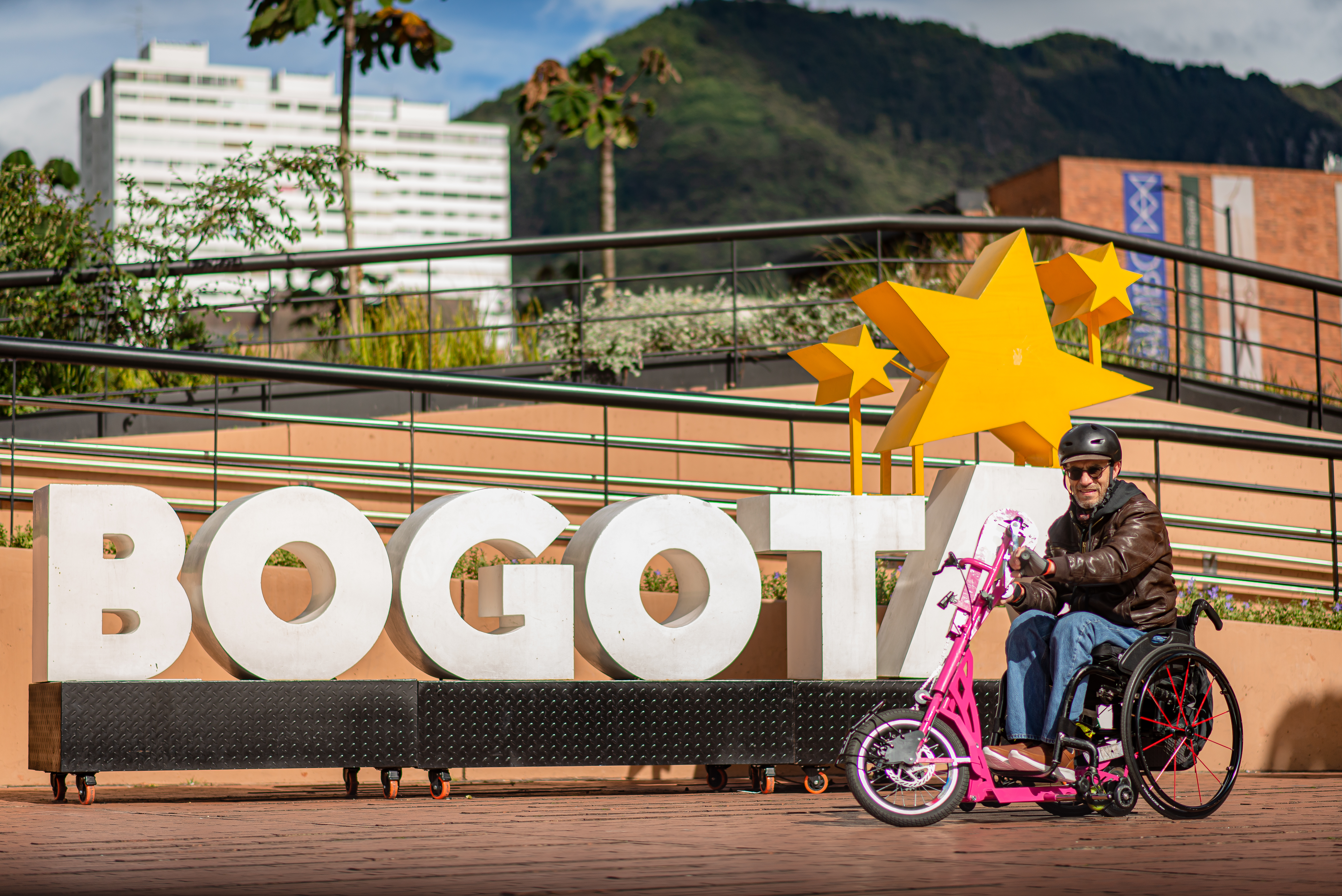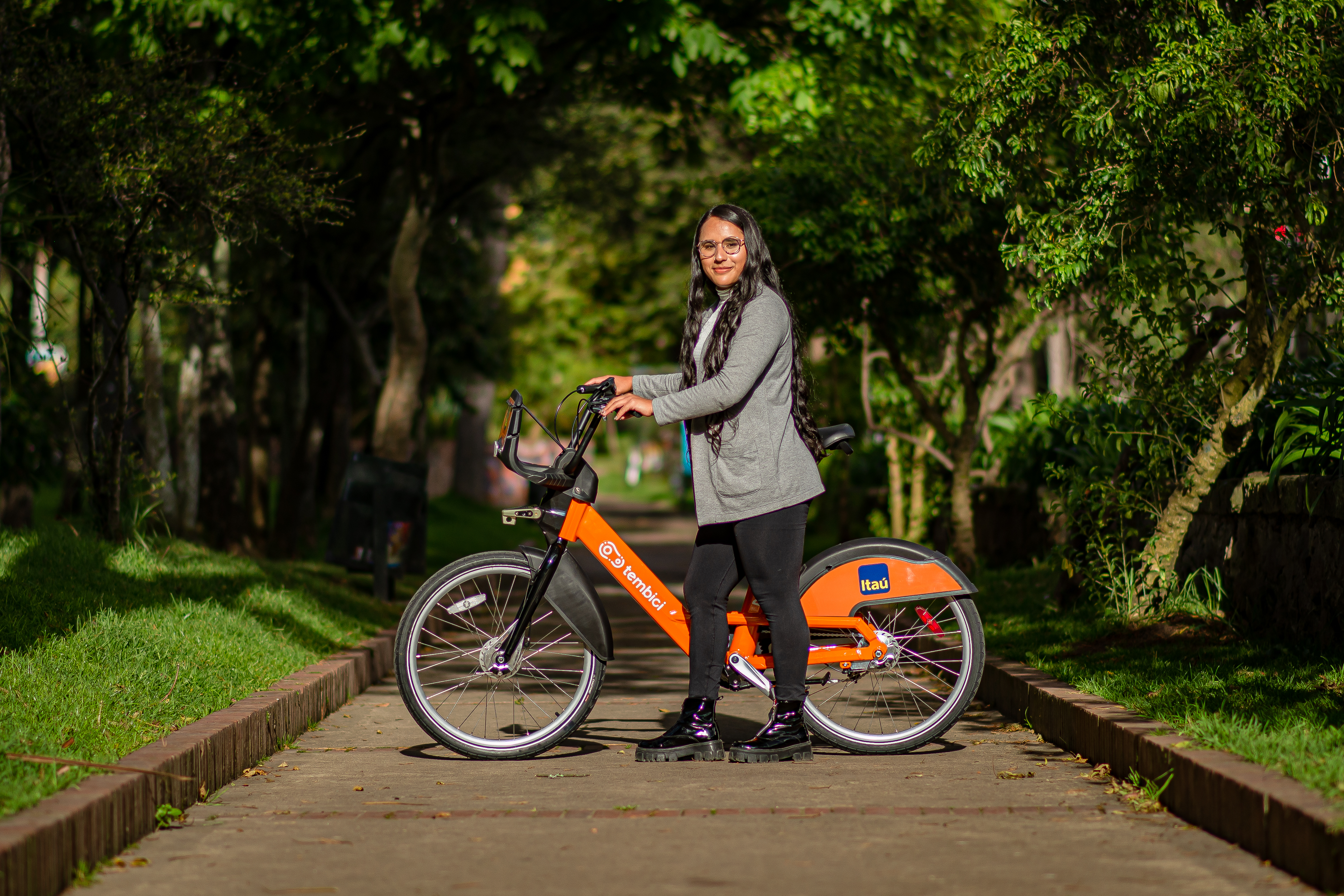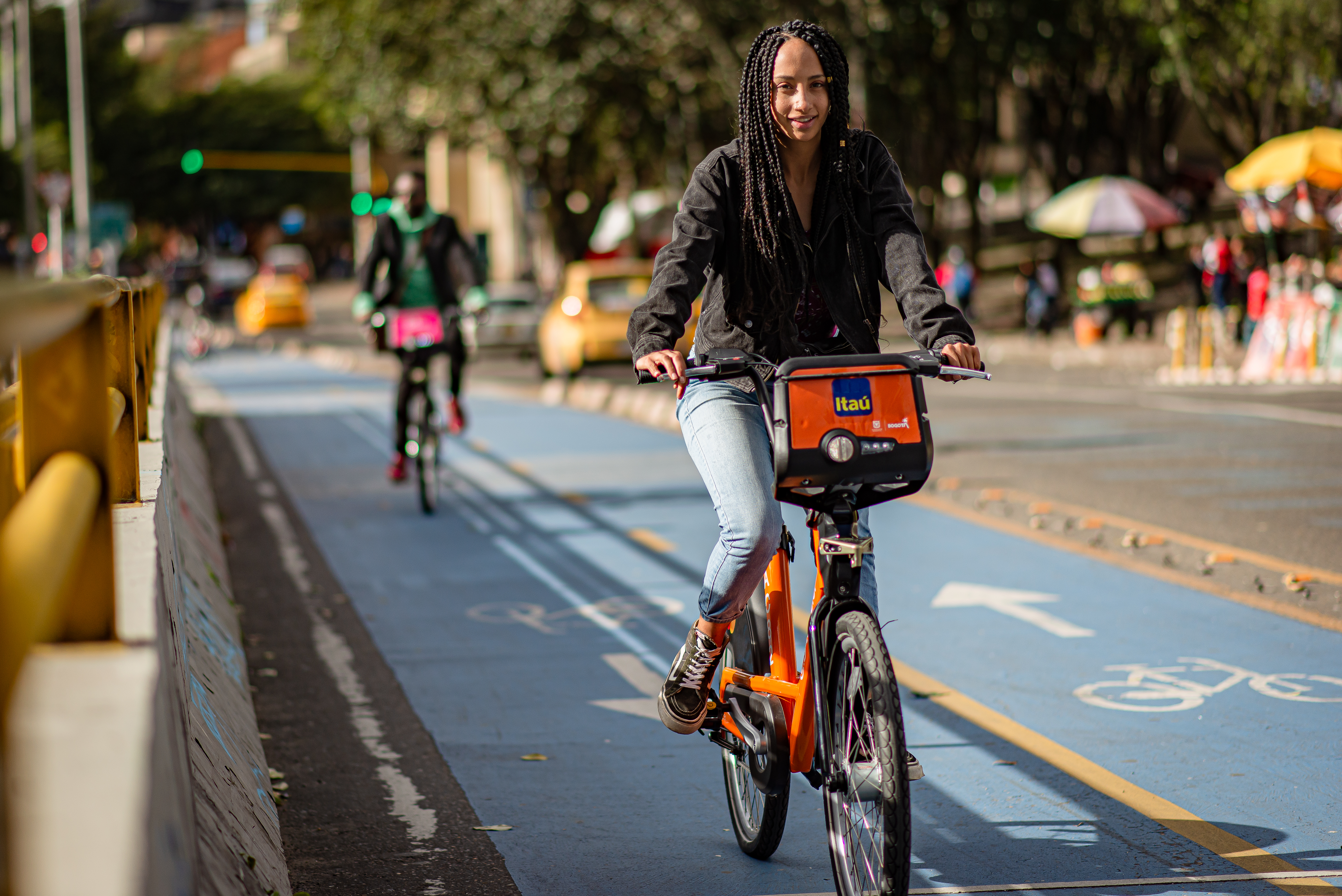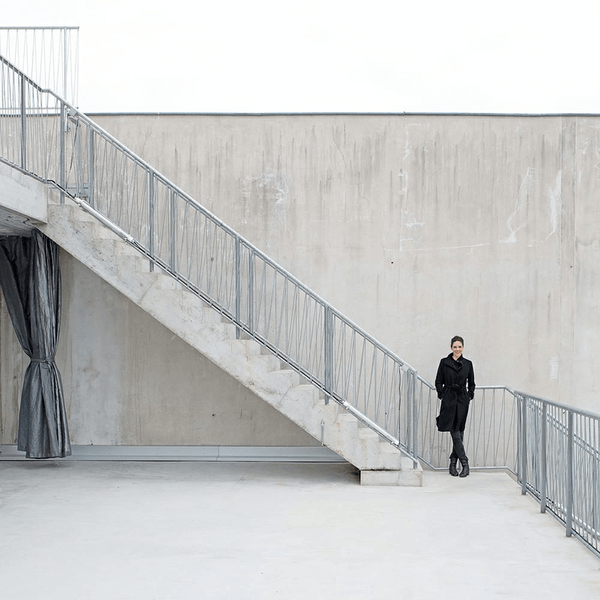 - © Secretaría de Movilidad, Bogotá
- © Secretaría de Movilidad, Bogotá - © Secretaría de Movilidad, Bogotá
- © Secretaría de Movilidad, Bogotá - © Secretaría de Movilidad, Bogotá
- © Secretaría de Movilidad, Bogotá
City
Bogotá
Main actors
Local Government, City Government, Private Sector
Project area
Whole City/Administrative Region
Duration
Ongoing since 2022
The Shared Bicycle System of Bogotá is the largest in Latin America consisting of 1,500 mechanical bicycles, 1,500 pedal-assist bicycles, 150 box bicycles and 150 Manocletas (an accessory for wheelchair users). Furthermore, 150 bicycles have rear seats for children, promoting care trips and inclusion with a gender perspective. The city is also a pioneer in the region with 50% of the bicycles being pedal-assist electric bicycles.
The initiative was launched in September 2022 and features approximately 300 stations strategically placed throughout various locations, including road networks, shopping centres, public squares, sidewalks, pedestrian pathways, parks, and areas beneath pedestrian and vehicular bridges.
In recent years, the city of Bogota has experienced a range of environmental issues due to the increase in the number of automobiles that travel on the city's road network. This has resulted in increased noise pollution and the emission of toxic substances in the air from public service buses, cargo trucks, cars, motorcycles and factories that produce polluting emissions from the combustion of materials, among other aspects.
To address this problem, an initiative was proposed to develop, implement and promote the use of bicycles as a sustainable public transportation system, integrated to the mass mobility system of the capital district. The primary objective is to use it as an alternative non-polluting form of transportation that has beneficial health outcomes for the people of Bogota.
As a result of Agreement 346 established on December 23, 2008, the Council of Bogota mandated the implementation of the bicycle transportation service called "BICI”. This initiative aimed to facilitate a modal interchange within the Integrated Public Transportation System of the Capital District. Consequently, the District Agreement sought to promote the use of bicycles as a sustainable, non-polluting transportation system.
Over time, various district administrations have sought to achieve their goals by exploring different legal alternatives.
In 2015, a concession contract was signed, only to be terminated early in 2016 due to serious breaches by the contractor. Despite the contract's termination, the need for citizens to access rental bicycles persisted, leading to the consideration of a Public-Private Partnership (PPP) in 2016. However, the originator failed to provide necessary information for project feasibility within the given timeframe.
In 2018, a private company applied again to implement the system through the same scheme, however in 2020 it withdrew its proposal.
In 2019, authorities examined the available legal framework to facilitate public access to bicycles for residents and visitors of the capital, considering the option of economically utilizing public space. Although a public process took place, no proponents came forward.
In 2020, in line with the District Development Plan (PDD) 2020-2024, Bogota aimed to implement a Bicycle Sharing System that prioritized inclusivity, accessibility, and gender sensitivity. This plan involved introducing operational and safety measures to encourage and increase women's use of bicycles.
Consistent with the city's Bicycle Public Policy, adopted in 2021, the goal was to enhance the city's physical, socioeconomic, environmental, and cultural conditions for bicycle usage and enjoyment. This included implementing complementary services such as the bicycle sharing system, expanding, connecting, and improving bicycle infrastructure, and providing bicycle parking.
Consequently, in 2022, and prior to establishing a special legal framework for the system's financial sustainability, a contractor with adequate experience was selected to implement and operate the system. This arrangement required no payment from the city for necessary investments and included payment to the administration for authorizing this economic activity in public spaces through street furniture.
As a result, on September 30, 2022, the Bogotá Bicycle Sharing System began operating.
The financing for the bike-sharing system is entirely private, with no budgetary disbursements from the Administration. The Administration receives financial compensation for allowing the economic use of public space, independent of the private entity's results in the assigned exploitation area.
The demand risk is solely assumed by the user, as the contract's purpose is to authorize public space exploitation, not the provision of a public bicycle service. The service is incidental, and the contractor is responsible for building its business model. This implies determining the fees for using the system at their own risk.
The Administration does not interfere with service rates, which are market-regulated and dependent on the business model developed by the user. The value received by the user relies entirely on its management of the system.
Contract No. 2022-63 for the Administration, Maintenance, and Economic Use of Public Space (CAMEP) aims to manage the system. It authorizes a private individual to conduct "micromobility" activities, defined as the rental or shared use of micromobility vehicles in public spaces. The vehicles, stations, and other physical resources may be used for displaying brands and outdoor visual advertising according to current regulations.
In line with District Agreement 811 of 2021 and Resolution 93495 of 2021, the contract also authorized the provision of individual mobility vehicle service to the contractor. The contractor, at their own risk, makes the investment to provide the service directly in the assigned public space while the Administration receives in-kind economic compensation (bicycle parking) to contribute to public space and non-motorized mobility sustainability.
The contractor is solely responsible for constructing the business model and ensuring the system's sustainability. The Administration is not authorized to intervene in the economic activity conducted in the public space.
The estimated reference value for the Administration's contract execution, understood as the estimated value of the remuneration to be paid by the user during the term of use (with a minimum of 2,000 bicycles required), was 120,379 UVT, equivalent to COP 4,370,720,732. However, considering the contractor offered 3,300 bicycles and waived the payment exemption, the value of the proposal was COP 10,467,842,760, although this amount is variable. The contract's value is undetermined but can be calculated based on the in-kind remuneration (bicycle parking) received by the Capital District for authorizing the economic use of public space for micromobility vehicle rental activities.
Results:
This bike-sharing system is the first in the world to feature manocletas, an accessory that enables individuals with physical disabilities and wheelchair users to participate.
The system's design aids in building and strengthening inclusive mobility with a gender perspective, as the bicycles' low-frame technical design eliminates barriers that restrict the active mobility of women, girls, and the elderly.
The system is designed to support caregiving trips by offering special services such as complimentary child seats and bicycles equipped with shared-use lockers.
As an inclusive and accessible system, it provides information to users through sign language and Braille at stations, with a long-term goal of integrating special services for visually impaired individuals (e.g., tandem bicycles).
The system benefits not only its users but also the broader cycling community, including non-users. The city gains free bicycle parking and workshops in exchange for authorizing the system's implementation, fostering a sense of ownership among all citizens.
Impact:
The city has benefited from 300 free bike workshops and 413 free bike racks, which bolster the supplementary services of the urban bikeway network.
Over 150,000 trips have been recorded within the first four months of the system's operation.
Public health in the city has improved as a result of promoting physical activity among residents.
Urban mobility has been enhanced by alleviating traffic congestion in the city.
The burden on the city's public transport system has been relieved by offering sustainable alternative options.
The import timelines and procedures for bicycle system components took longer than anticipated.
Identifying public spaces with adequate dimensions to fulfill technical requirements proved challenging, particularly in older parts of the city where public space is scarce.
The procedures for installing outdoor advertising in heritage spaces require more time than originally planned
Issues related to vandalism and theft of system components such as the cycle workshops.
Encourage the use of manocletas, since at the beginning of the operation there were no reports of renting these vehicles.
There were technical difficulties prior to the launch due to the lack of 5G networks.
Implementing a bike sharing system requires more than 5 months.
Involving the community in deciding the locations of stations improves the likelihood of ownership and relocation requests.
The perception of insecurity concerning stations and bicycles was greater than the reality, as the system experiences fewer thefts than anticipated.
Public investment is not required to have a bike sharing system.
External links / documents
On Map
The Map will be displayed after accepting cookie policy
